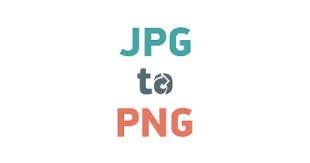Introduction
In today’s digital landscape, images serve as powerful communication tools, conveying messages, emotions, and information with visual impact.
However, not all image formats are created equal, and there are times when converting between formats becomes necessary.
One common conversion task is the transformation from JPG file to PNG. In this article, we’ll embark on a journey to explore the nuances of these two formats,
the need for conversion, and how online converters streamline the process.
What are the JPG and PNG?
Before delving into the conversion process, let’s first understand the characteristics .
- JPG (or JPEG): Joint Photographic Experts Group, commonly known as JPG, is a widely used image format suitable for photographs and images with complex color gradients. JPG employs lossy compression, meaning it sacrifices some image data to reduce file size while maintaining acceptable visual quality. This compression method makes JPG ideal for web usage and digital photography.
- PNG (Portable Network Graphics): PNG is a versatile image format known for its lossless compression and support for transparency. Unlike It preserves all image data without sacrificing quality, making it suitable for graphics, logos, and images with sharp edges or transparent backgrounds. PNG is often preferred for digital artwork, illustrations, and images requiring high fidelity.
Differences between JPG and PNG
The choice between JPG and PNG depends on factors such as image content, intended use, and desired quality.
- Compression: JPG utilizes lossy compression, resulting in smaller file sizes but potentially lower image quality over time due to compression artifacts. In contrast, PNG employs lossless compression, maintaining image integrity and detail without sacrificing quality.
- Transparency: PNG supports alpha channels, allowing for transparent backgrounds or semi-transparent elements, which it does not offer.
- Image Types: JPG is suitable for photographs and images with complex color gradients, while excels in preserving sharp edges, text, and graphics.
The Need for Converting JPG to PNG
There are several scenarios where converting JPG to PNG becomes necessary:
- Preserving Transparency: Images requiring transparent backgrounds or alpha channels, such as logos or digital artwork, benefit from PNG’s support for transparency.
- Maintaining Image Quality: Converting JPG to PNG allows for lossless compression, ensuring that image quality remains intact without degradation.
- Enhancing Text and Graphics: It is better suited for images containing text, graphics, or sharp edges, as it preserves clarity and detail more effectively than JPG.
- Ensuring Compatibility: Certain applications or platforms may require images to be in format for compatibility reasons, necessitating conversion from JPG to PNG.
Conclusion
In conclusion, the journey from JPG to PNG represents a transformational shift in image quality, transparency, and versatility.
By understanding the characteristics of each format and the need for conversion, users can leverage the strengths of both
JPG and PNG to meet their specific requirements. Online converters offer a seamless and efficient solution for converting
between these formats, empowering users to unlock the full potential of their images with ease and convenience.
Whether preserving transparency, enhancing image quality, or ensuring compatibility, the journey from JPG to PNG
opens up a world of possibilities for digital creatives and professionals alike.
Read more article:- Trendingblogs




